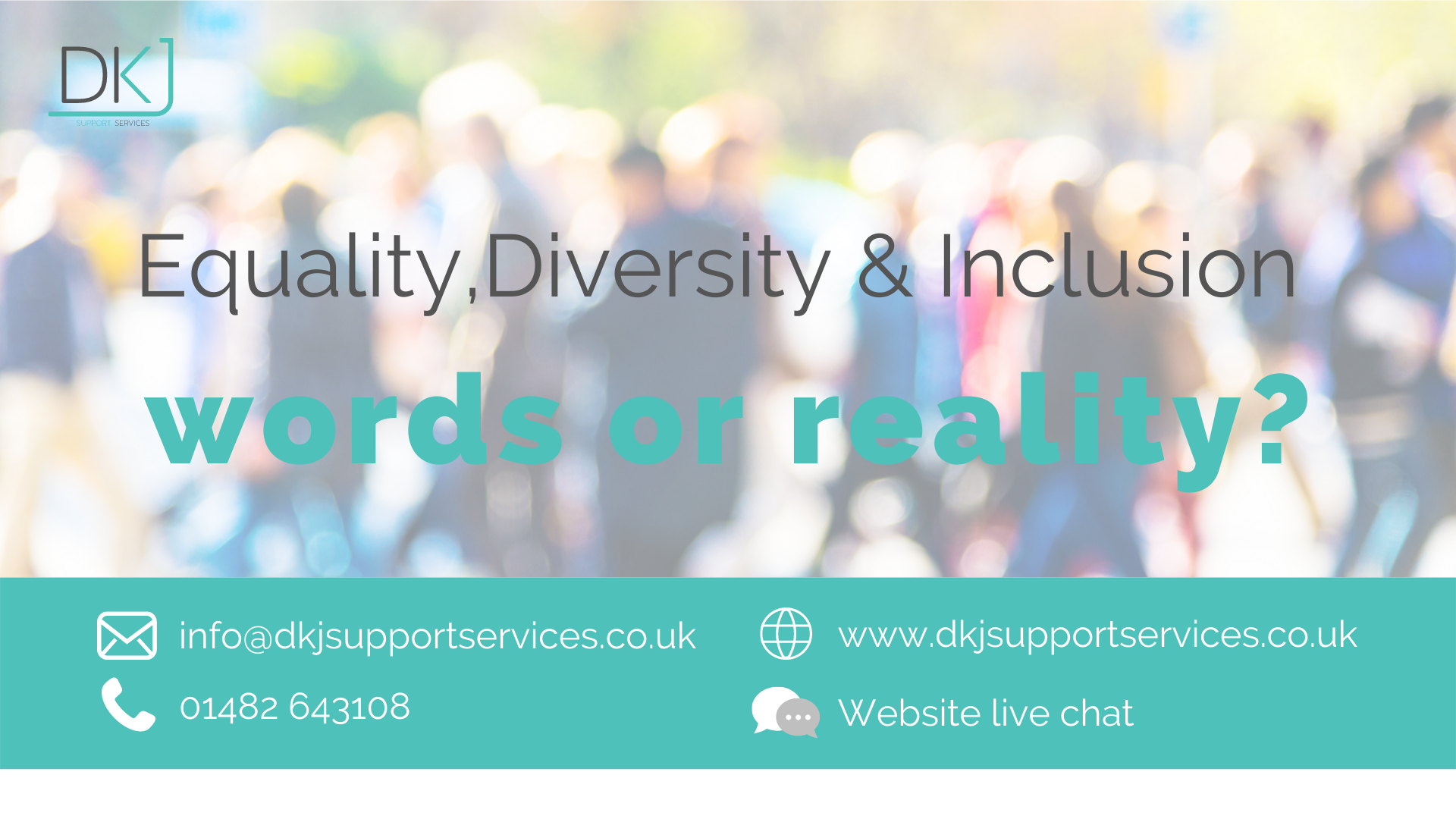Black Lives Matter and other current international and national events have brought equality, diversity and inclusion into focus but what does this mean for health and social care organisations who are already having to deal with the pandemic?
Many organisations declare that they’re ‘inclusive to all’ but what do those words translate to in the ‘real world’? Are health and social care services really inclusive and accessible to all?
The Public Sector Equality Duty is there to ensure that all public sector bodies, including many health and social organisations and services:
- eliminate unlawful discrimination, harassment and victimisation.
- advances equality of opportunity and fosters.
- positive relationships between those who have protected characteristics and those who do not.
They have to publish equality information like workforce data annually and develop, monitor and publish equality objectives at least every four years.
Words or reality?
I’ve worked on and seen many equality objectives set by health and social care organisations using statements like ‘we will commission health services that are informed by local needs and people, improve access and reduce health inequalities.’ And ‘develop inclusive leaders and allies’. They’re all great aspirations which truly tick the equality, diversity and inclusion box. But sadly, they don’t always become reality so why is that?
In the 10 years since the PSED came into force, I’ve worked with many community groups who share a protected characteristic, and many have told us that they cannot access healthcare services.
Imagine a group of LGBTQ+ older people who find themselves unable to use dementia services as they are not suitable for them.
Or Arabic ladies finding it difficult to use maternity services as there isn’t an interpreter available.
Or older people finding it tough to use online GP services which are now often the first point of contact due to the pandemic.
All things you and I might take for granted, like a visit to the GPs, becomes so difficult that the individuals in question cannot access the most basic of healthcare.
What can be done?
Why are the aspirations and what is happening in reality getting cross-wires? Frankly, it comes down to having difficult conversations which as humans we prefer to avoid like the plague.
Not for us. It’s the one of the main things I’ve been really proud to deliver for organisations over the years and its often something I think we can do much easier because we’re ‘removed’ from the situation. We’re outsiders looking in. We’re unbiased and in the middle.
We help teams to have those conversations and, in some cases, difficult discussions about how they can truly make their services accessible to those who, especially right now, need it the most.
By doing this, the words have genuinely become translated easier and into a reality. We just need more health and social organisations to have those frank conversations which will help them achieve some of their statutory equality objectives.
Take a look at the work we’ve done to help community groups and populations access health and social care services and how we’ve facilitated discussions with these groups. And I’d be delighted to chat through your plans to bring equality, diversity and inclusion to your service – just give me a call on 07968 100276.
Kiran Johnson – Director
kiran@dkjsupportservices.co.uk
01482 643108
www.dkjsupportservices.co.uk
